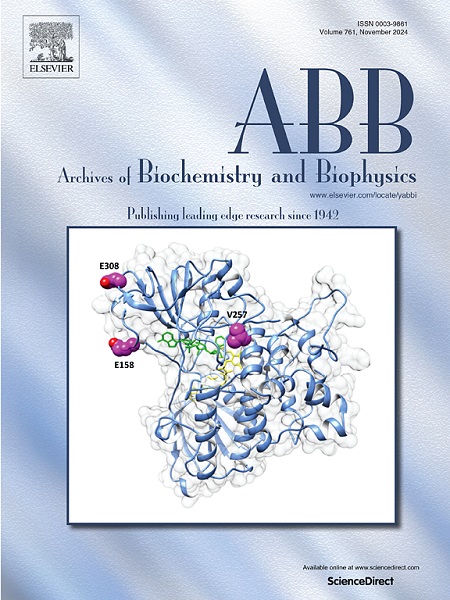Purification and properties of a polyvinyl alcohol-degrading enzyme produced by a strain of Pseudomonas
IF 3.8
3区 生物学
Q2 BIOCHEMISTRY & MOLECULAR BIOLOGY
引用次数: 0
Abstract
An enzyme which degraded polyvinyl alcohol, a water-soluble synthetic polymer, was isolated as a single protein from a culture of a strain of Pseudomonas. The pink-colored enzyme had absorption maxima at 280, 370, and 480 nm, a molecular weight of about 30,000, and an isoelectric point at about pH 10.3. The enzyme was most active at pH values from 7 to 9 and at 40 dgC and was stable at pH values from 3.5 to 9.5 and at temperatures below 45 dgC. The viscosity of the reaction mixture decreased and the pH dropped when the enzyme acted on polyvinyl alcohol as a substrate. Furthermore, the enzyme required O2 for the reaction and produced 1 mol of H2O2, per 1 mol of O2 consumed. The molecules of polyvinyl alcohol were cleaved into small fragments with a wide distribution of molecular weights. Inorganic Hg ions markedly inactivated the enzyme, and the activity was immediately recovered by glutathione. Enzyme inhibitors tested, which included p-chloromercuribenzoic acid, KCN, o-phenanthroline, and H2O2, showed no effect on the activity. Polyvinyl alcohol oxidized by periodic acid was similarly oxidized by the enzyme. The enzyme did not oxidize most of a variety of low molecular weight hydroxy compounds examined, such as primary alcohols, secondary alcohols, tertiary alcohols, diols, triols, and polyols, except for some secondary alcohols, such as 4-heptanol.
假单胞菌聚乙烯醇降解酶的纯化及性能研究。
本文章由计算机程序翻译,如有差异,请以英文原文为准。
求助全文
约1分钟内获得全文
求助全文
来源期刊

Archives of biochemistry and biophysics
生物-生化与分子生物学
CiteScore
7.40
自引率
0.00%
发文量
245
审稿时长
26 days
期刊介绍:
Archives of Biochemistry and Biophysics publishes quality original articles and reviews in the developing areas of biochemistry and biophysics.
Research Areas Include:
• Enzyme and protein structure, function, regulation. Folding, turnover, and post-translational processing
• Biological oxidations, free radical reactions, redox signaling, oxygenases, P450 reactions
• Signal transduction, receptors, membrane transport, intracellular signals. Cellular and integrated metabolism.
 求助内容:
求助内容: 应助结果提醒方式:
应助结果提醒方式:


